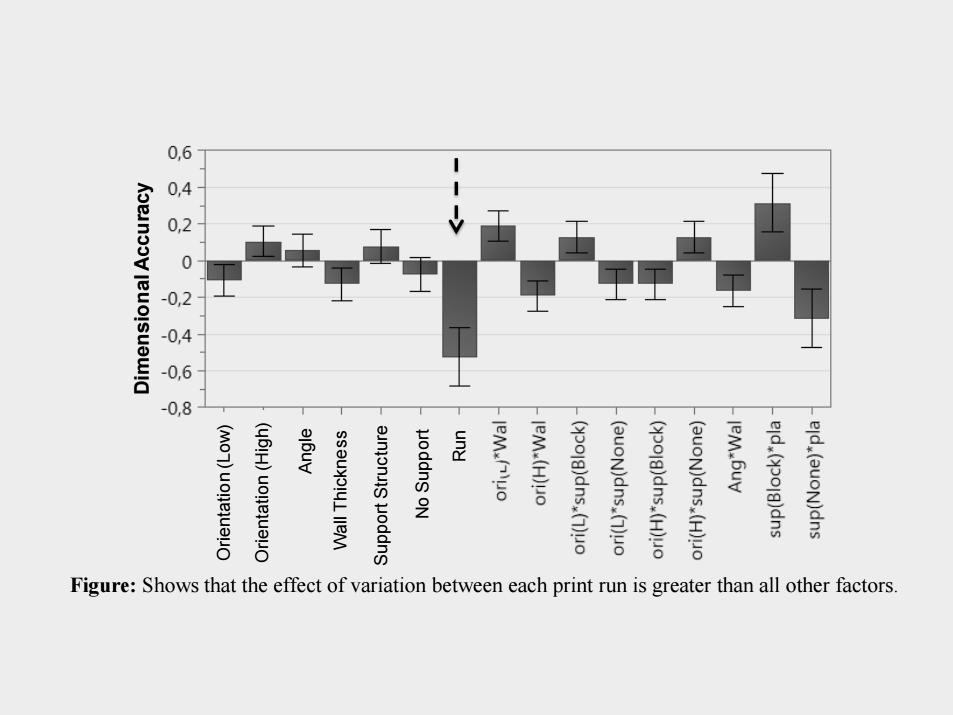Projektinitiativ #65: Reliability of Metal Additive Manufacturing ( 1 kommentar)

Metal additive manufacturing (AM) has a short history in comparison to the more conventional metal forming processes such as casting, forging, machining, etc. Forming metals by casting has been in existence since 4000 BC. Conventional machining processes have existed since the middle of the 19th century. Even modern Computer Numerical Control (CNC) machining – which is considered to be a close competitor to metal AM - has been available since 1950. In view of the above remarks, it is reasonable to state that the conventional metal forming processes have been improved and optimized to a point where process reliability is to a large extent guaranteed. However, this is not the case for metal AM processes and it goes without saying that a reliable AM process is a prerequisite for its further adoption by the metal industry.
Sepehr Hatami presents the initiative during the 2017 conference

Repeatability, reproducibility and the overall reliability of metal AM processes are important questions which have not received adequate attention. A systematic approach is needed to map the sources of variation. The idea behind this project initiative is to use statistical tools to identify and classify causes of variation in every stage of the AM process and to determine their impact on the final product characteristics.
Once the critical sources of variation are identified and ranked, researchers will be able to focus their attention on the input factors and control parameters which have the highest impact on the product characteristics. The systematic approach proposed here is novel in the context of AM, where the greatest deal of effort is currently devoted to the optimization of individual (or small sets of) parameters, regardless of their possible interactions with other aspects of the manufacturing process.
The figure is based on a case study of parts produced by Selective Laser Melting process and shows the effect of different factors on the dimensional accuracy. Unexpectedly, the effect of the variation between each run is greater than all other factors.
Namn Sepehr Hatami
Organisation Swerea IVF AB
Kommentar #1
The AM technique has matured during the recent years and, in some applications, has become an alternative to traditional manufacturing. There are many challenges in additive manufacturing, see e.g. [1], and much research effort has been put into investigating the build process, powder composition and metallurgy for AM built products. From a mechanical designer's point of view there are still need for guidance of when and how to use AM components. One of the major challenges is to design AM built components that are supposed to carry significant loads. For carrying static loads, the AM built components can be expected to perform well, based on investigations presented in [2]. However, for carrying dynamic loads, phenomena like fatigue are critical for the useful life of components. The fatigue phenomenon is triggered by defects and is thus highly depending on rough surface, heat treatment, porosities and notches. Therefore, a large scatter in fa tigue performance has been observed for AM built components, see e.g. [2]. From a designer's point it is important to know the limits of AM for load carrying components and to be able to establish appropriate safety factors depending on, for example, the scatter in fatigue life and other sources of variation. I think that the proposed project idea can help to safely introduce AM components in cases where the mechanical properties are of major importance.
References:
1. Frazier, W.E. (2014): Metal Additive Manufacturing: A Review. J. of Materials in Engineering and Perform, Vol. 23, pp. 1917–1928. DOI:10.1007/s11665-014-0958-z
2. Lewandowski, J.J., and Seifi, M. (2016): Metal Additive Manufacturing: A Review of Mechanical Properties. Annual Review of Materials Research, Vol. 46, pp. 151-186. DOI: 10.1146/annurev-matsci-070115-032024
Namn Pär Johannesson
Organisation RISE Safety / Mechanics Research

